Datasets:
Languages:
English
Size:
10K - 100K
File size: 8,407 Bytes
8660f0c cc63030 8660f0c ba3aa73 c72624b 13b6b9f 8660f0c 84f500a 307a633 84f500a cc63030 7a548e6 7042140 8660f0c 7042140 8660f0c 4862e1b 8660f0c e263a05 8660f0c 7042140 8660f0c 7042140 8660f0c 43da752 7f7603f 63f628e 7f7603f 43da752 63f628e 56605df 63f628e 6e52a8e 8660f0c ba3aa73 8660f0c 7675e40 8660f0c 83bb1c9 8660f0c 7675e40 8660f0c 83bb1c9 8660f0c 1ea1710 7675e40 1ea1710 8660f0c 7675e40 8660f0c 83bb1c9 8660f0c c6f3caa 9bbb296 6e52a8e 654a621 63f628e 654a621 559c591 ab9cce6 c6f3caa |
1 2 3 4 5 6 7 8 9 10 11 12 13 14 15 16 17 18 19 20 21 22 23 24 25 26 27 28 29 30 31 32 33 34 35 36 37 38 39 40 41 42 43 44 45 46 47 48 49 50 51 52 53 54 55 56 57 58 59 60 61 62 63 64 65 66 67 68 69 70 71 72 73 74 75 76 77 78 79 80 81 82 83 84 85 86 87 88 89 90 91 92 93 94 95 96 97 98 99 100 101 102 103 104 105 106 107 108 109 110 111 112 113 114 115 116 117 118 119 120 121 122 123 124 125 126 127 128 129 130 131 132 133 134 135 136 137 138 139 140 141 142 143 144 145 146 147 148 149 150 151 152 153 154 155 156 157 158 159 160 161 162 163 164 165 166 167 168 169 170 171 172 173 174 175 176 177 178 179 180 |
---
pretty_name: Wind Tunnel 20K Dataset
size_categories:
- 10K<n<100K
task_categories:
- feature-extraction
- graph-ml
- image-to-3d
language:
- en
tags:
- simulation
- openfoam
- physics
- windtunnel
- inductiva
- machine learning
- synthetic
---
<p align="center">
<img src="https://huggingface.co/datasets/inductiva/windtunnel/resolve/main/assets/pressure_field_mesh.png", width="500px">
</p>
# Wind Tunnel 20K Dataset
The Wind Tunnel Dataset contains 19,812 [OpenFOAM](https://www.openfoam.com/) simulations of 1,000 unique automobile-like objects placed in a virtual wind tunnel.
Each object is simulated under 20 distinct conditions: 4 random wind speeds ranging from 10 to 50 m/s, and 5 rotation angles (0°, 180° and 3 random angles).
To ensure stable and reliable results, each simulation runs for 300 iterations.
The meshes for these automobile-like objects were generated using the [Instant Mesh model](https://github.com/TencentARC/InstantMesh) and sourced from the [Stanford Cars Dataset](https://www.kaggle.com/datasets/jessicali9530/stanford-cars-dataset).
The entire dataset of 20,000 simulations is organized into three subsets: 70% for training, 20% for validation, and 10% for testing.
The data generation process itself was orchestrated using the [Inductiva API](https://inductiva.ai/), which allowed us to run hundreds of OpenFOAM simulations in parallel on the cloud.
### Dataset Structure
```
data
├── train
│ ├── <SIMULATION_ID>
│ │ ├── input_mesh.obj
│ │ ├── openfoam_mesh.obj
│ │ ├── pressure_field_mesh.vtk
│ │ ├── simulation_metadata.json
│ │ └── streamlines_mesh.ply
│ └── ...
├── validation
│ └── ...
└── test
└── ...
```
### Dataset Files
Each simulation in the Wind Tunnel Dataset is accompanied by several key files that provide both input and output data.
Here’s a breakdown of the files included in each simulation:
- **input_mesh.obj**: OBJ file with the input mesh.
- **openfoam_mesh.obj**: OBJ file with the OpenFOAM mesh.
- **pressure_field_mesh.vtk**: VTK file with the pressure field data.
- **streamlines_mesh.ply**: PLY file with the streamlines.
- **metadata.json**: JSON with metadata about the input parameters and about some output results such as the force coefficients (obtained via simulation) and the path of the output files.
### Sample from the dataset:
| **Input Mesh** | **OpenFOAM Mesh** |
|-------------------------------|------------------------------|
| 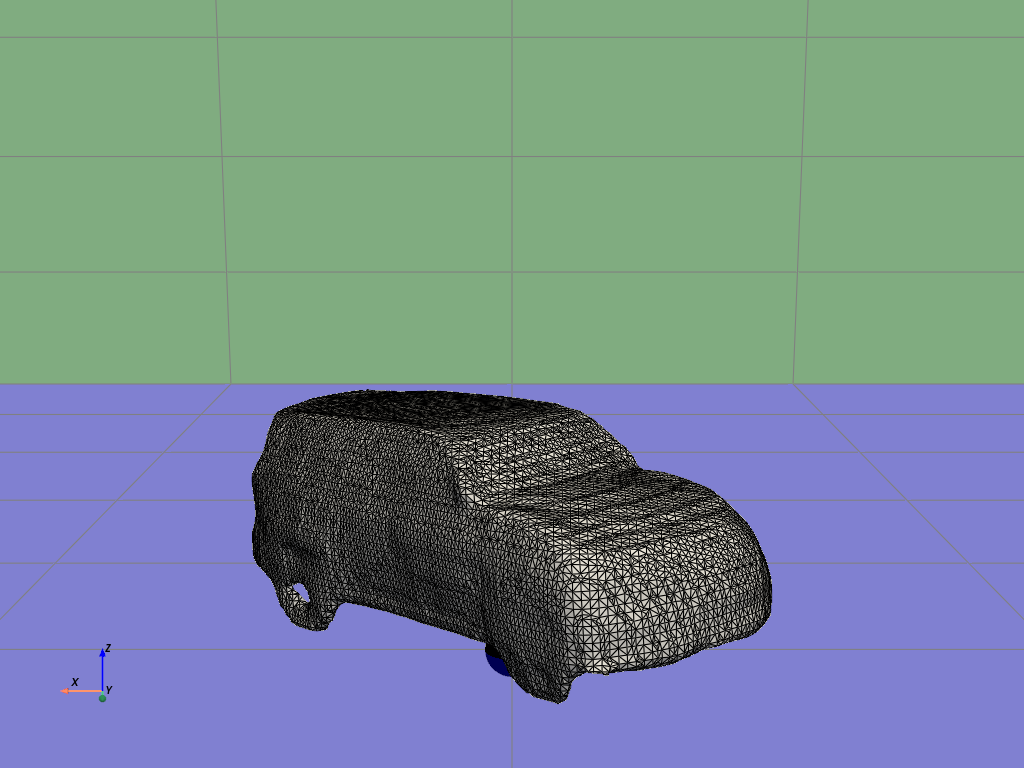 | 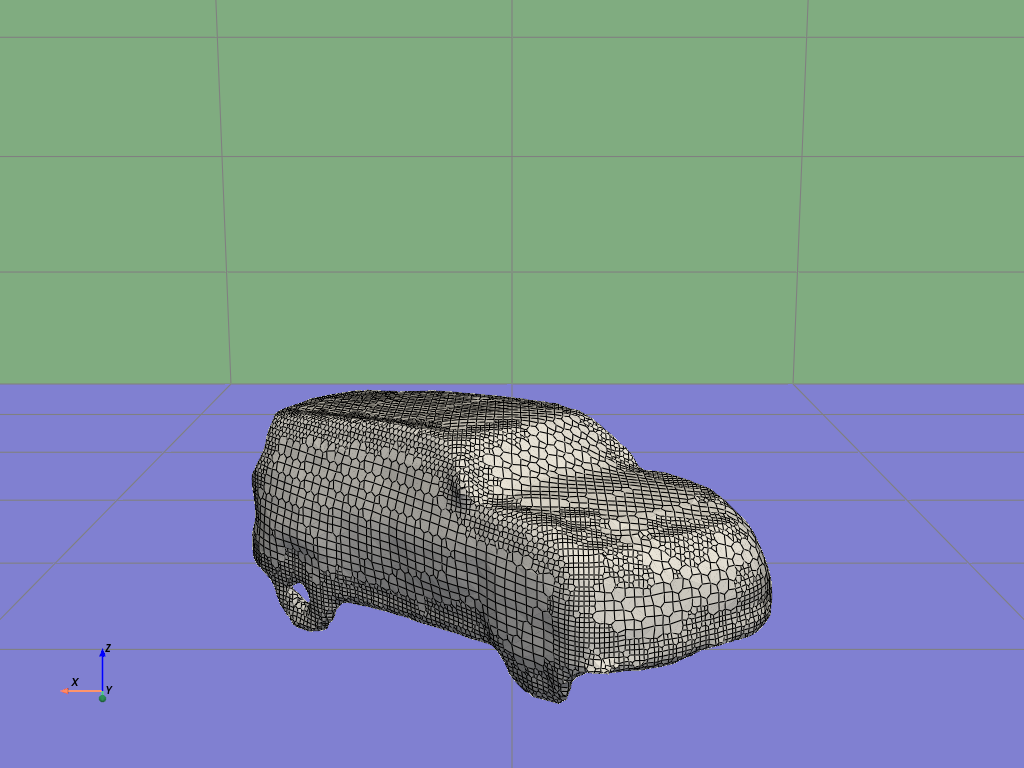 |
| **Pressure Field Mesh** | **Streamlines Mesh** |
| 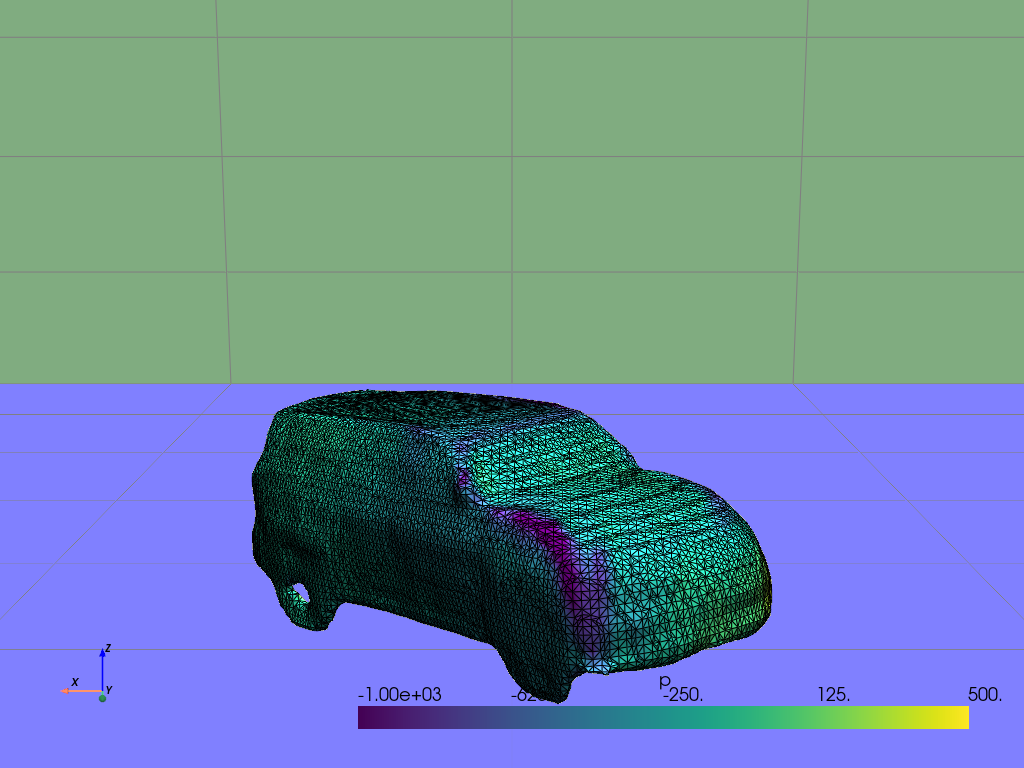 | 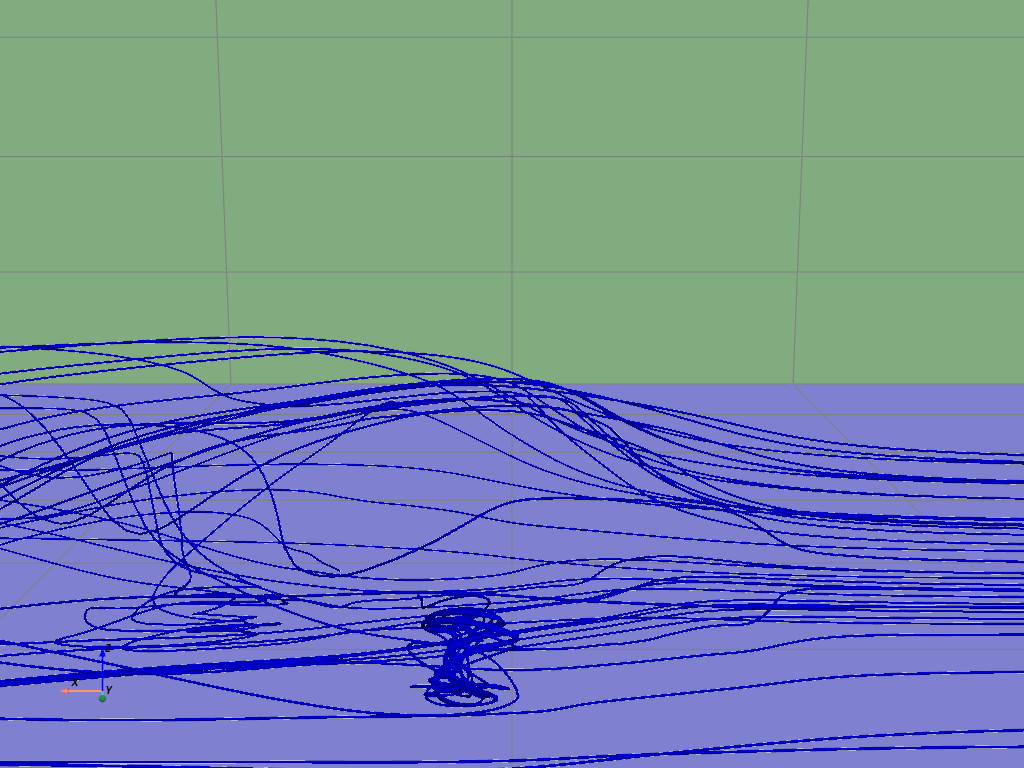 |
- **Metadata**
```json
{
"id": "1w63au1gpxgyn9kun5q9r7eqa",
"object_file": "object_24.obj",
"wind_speed": 35,
"rotate_angle": 332,
"num_iterations": 300,
"resolution": 5,
"drag_coefficient": 0.8322182,
"moment_coefficient": 0.3425206,
"lift_coefficient": 0.1824983,
"front_lift_coefficient": 0.4337698,
"rear_lift_coefficient": -0.2512715,
"input_mesh_path": "data/train/1w63au1gpxgyn9kun5q9r7eqa/input_mesh.obj",
"openfoam_mesh_path": "data/train/1w63au1gpxgyn9kun5q9r7eqa/openfoam_mesh.obj",
"pressure_field_mesh_path": "data/train/1w63au1gpxgyn9kun5q9r7eqa/pressure_field_mesh.vtk",
"streamlines_mesh_path": "data/train/1w63au1gpxgyn9kun5q9r7eqa/streamlines_mesh.ply"
}
```
### Dataset Statistics
The dataset comprises 19,812 valid samples out of a total of 20,000 simulations, with [188 submissions failing](https://huggingface.co/datasets/inductiva/windtunnel/resolve/main/failed_tasks.txt) due to numerical errors in OpenFOAM.
The complete dataset requires X GB of storage. Below, the histograms illustrate the distribution of points:
| **Input Mesh** | **OpenFOAM Mesh** |
|-------------------------------|------------------------------|
| 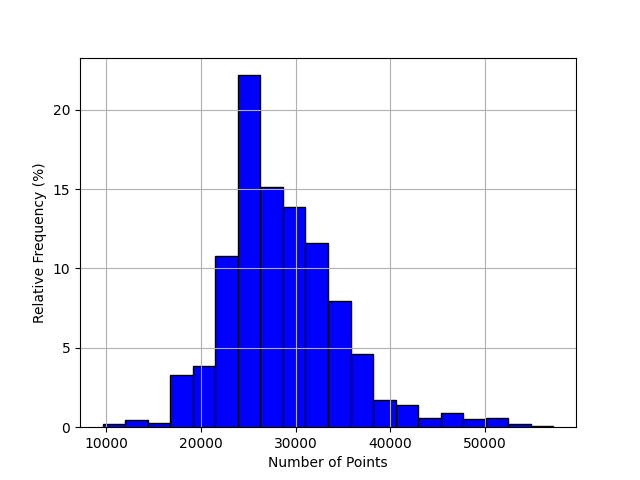 |  |
## Downloading the Dataset:
To download the dataset you have to install the [Datasets package](https://huggingface.co/docs/datasets/en/index) by HuggingFace:
```python
pip install datasets
```
### 1. Using snapshot_download()
```python
import huggingface_hub
dataset_name = "inductiva/windtunnel-20k"
# Download the entire dataset
huggingface_hub.snapshot_download(repo_id=dataset_name, repo_type="dataset")
# Download to a specific local directory
huggingface_hub.snapshot_download(
repo_id=dataset_name, repo_type="dataset", local_dir="local_folder"
)
# Download only the simulation metadata across all simulations
huggingface_hub.snapshot_download(
repo_id=dataset_name,
repo_type="dataset",
local_dir="local_folder",
allow_patterns=["*/*/*/simulation_metadata.json"]
)
```
### 2. Using load_dataset()
```python
import datasets
# Load the dataset (streaming is supported)
dataset = datasets.load_dataset("inductiva/windtunnel-20k", streaming=False)
# Display dataset information
print(dataset)
# Access a sample from the training set
sample = dataset["train"][0]
print("Sample from training set:", sample)
```
## OpenFoam Parameters
You can find the OpenFoam configuration files on github: [https://github.com/inductiva/wind-tunnel/tree/main/windtunnel/templates](https://github.com/inductiva/wind-tunnel/tree/main/windtunnel/templates)
## Generating the meshes
Existing object datasets have many limitations: they are either small in size, closed source, or have low quality meshes.
Hence, we decided to generate our own dataset using the [InstantMesh](https://github.com/TencentARC/InstantMesh) model, which is open-source (Apache-2.0) and is currently state-of-the-art in image-to-mesh generation. By leveraging it we were able to generate a large number of good quality open-source automobile meshes.
The automobile-like meshes were generated by running the image-to-mesh model [InstantMesh](https://github.com/TencentARC/InstantMesh) on 1k images from the publicly available (Apache-2.0) [Stanford Cars Dataset](https://www.kaggle.com/datasets/jessicali9530/stanford-cars-dataset) consisting of 16,185 images of automobiles.
Naturally, running the image-to-mesh model leads to meshes that may have certain defects, such as irregular surfaces, asymmetry issues and disconnected components. Therefore, after running the image-to-mesh model, we run a custom post-processing step where we try to improve the meshes quality. We used PCA to align the mesh with the main axis and we removed disconnected components.
The resulting set of meshes still have little defects, such as presence of "spikes" or "cavities" in supposedly flat areas and asymmetric shapes, among others. We consider these little defects as valuable features of the dataset not as issues, since from the point of view of the learning problem, they bring challenges to the model that we believe will contribute to obtaining more robust and generalizable models.
If you detect any clearly problematic mesh, please let us know so we can correct that issue for the next version of the Windtunnel-20k dataset.
Note: the code used to generate the meshes and postprocess them is available on github: [https://github.com/inductiva/datasets-generation](https://github.com/inductiva/datasets-generation)
## What's next?
If you have any issues using this dataset, feel free to reach out to us at [[email protected]]([email protected])
To learn more about how we created this dataset—or how you can generate synthetic datasets for Physics-AI models—visit [Inductiva.AI](inductiva.ai) or check out our blog post on [transforming complex simulation workflows into easy-to-use Python classes](https://inductiva.ai/blog/article/transform-complex-simulations). |